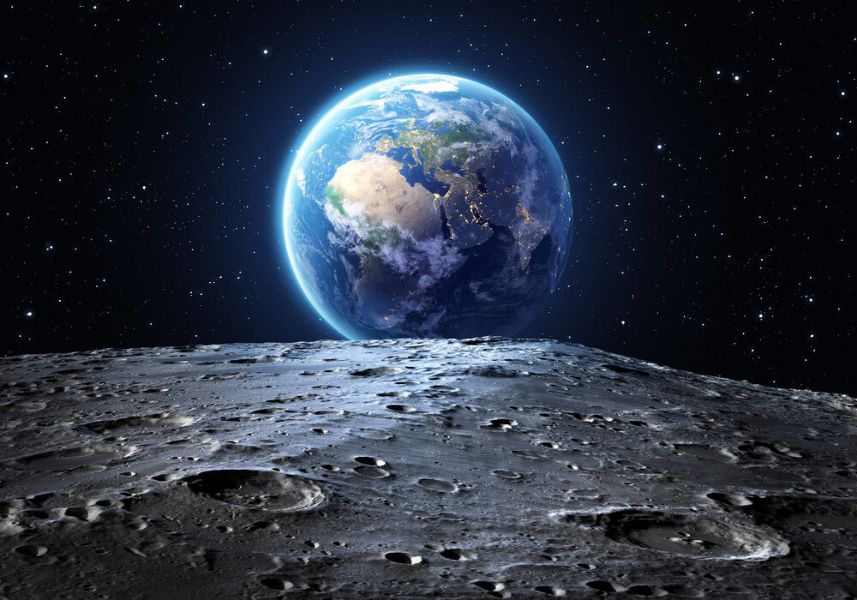
-
Published: 02 November 2023

A group of scientists has presented a new theory that may solve two mysteries, one related
to what revolves around the planet Earth every day, and the other that may exist in its
interior.
Edited by| Tony Wild
Science section - CJ journalist
World - November,2,2023
The first mystery is the origin of the moon, which the most common theory suggests was
formed after a collision with the Earth planet in the process of formation 4.5 billion years
ago.
The collision with the" Thea", an ancient planet the size of Mars, led to the spread of enough
material in space to form the moon's conglomerate.
The question of finding the remains of "Thea" remains by looking not in the air, but
underground, as reported by the study published by a team of scientists from American
institutions in the journal "Nature".
At a depth of 2,900 kilometers below the Earth's surface, two large "points" have been of
interest to scientists since they were discovered using seismic waves in the Eighties of the
last century.these two blocks, each of which has a size comparable to the area of a
continent and located at the bottom of the Earth's mantle, the layer that separates the
Earth's core from its crust, are located under Africa and the Pacific Ocean.
The two masses are much hotter and denser than the place around them, and computer
simulations conducted by the researchers indicate that these two masses are "buried
traces" of the planet Thea that penetrated the Earth at the time of the collision.
Qian yuan, a researcher in geodynamics at the California Institute of technology (CalTech)
and the lead author of the study, told Agence France-Presse that this collision was the
"most violent event that the Earth has experienced" in its history.
Yuan considered it "very strange" that there was no visible trace of this, and what prompted
him to think about the subject was his question about the location of the impacted object,
and he said "My answer: underground".
The research led to the collaboration of experts from two very different disciplines-space
and geology.
The planet Thea collided with the earth during its formation at a speed of more than 36
thousand kilometers per hour, a speed sufficient to make part of the body penetrate "the
earth to a great depth to reach its lower mantle".
And these molten pieces of rock, tens of kilometers in size, cooled, froze and descended to
the boundaries of the Earth's mantle and cores, helped by the presence of a percentage of
iron oxide greater than that in the terrestrial environment, which made them heavier.
These pieces of Rock were accumulated in two different masses, each larger than the size of
the moon, according to Yuan, who emphasizes that these conclusions remain the fruit of
models and simulations that are probably incomplete.
Christian Schroeder, an expert in Earth Sciences and planetary exploration at the University
of Stirling in Scotland, said the theory put forward by Yuan "fits into many indicators".
Schroeder, who was not involved in the study, believes that "what has been achieved is an
important result," pointing out that even if this result does not provide a clear answer to the
question of the origin of the moon, but provides a "reliable explanation for the strange cases
observed at the boundary between the Earth's mantle and its core.
As for the remains of Theia, they may be "responsible for important processes taking place
on Earth," according to the expert.
The two blocks are known to carry mantle plumes and molten material to the surface of the
Earth's crust, in a phenomenon associated with volcanic eruptions and also with the
evolution of supercontinents.
According to Yuan, the Theia effect played a role in the "evolution of the Earth over 4.5
billion years", which makes it "unique and different from other rocky planets".
